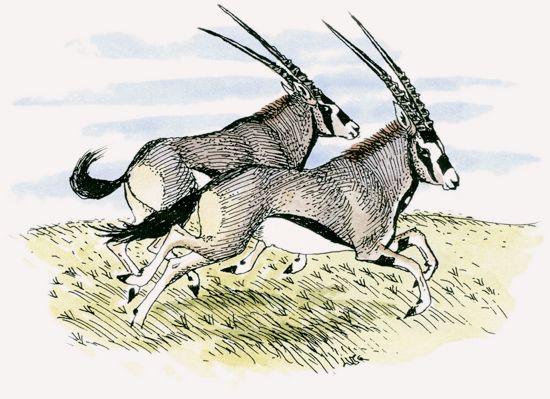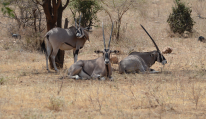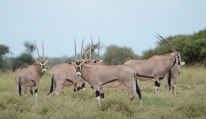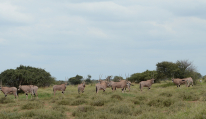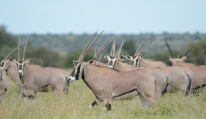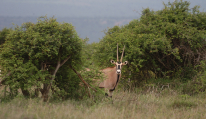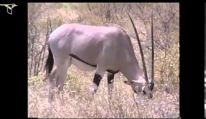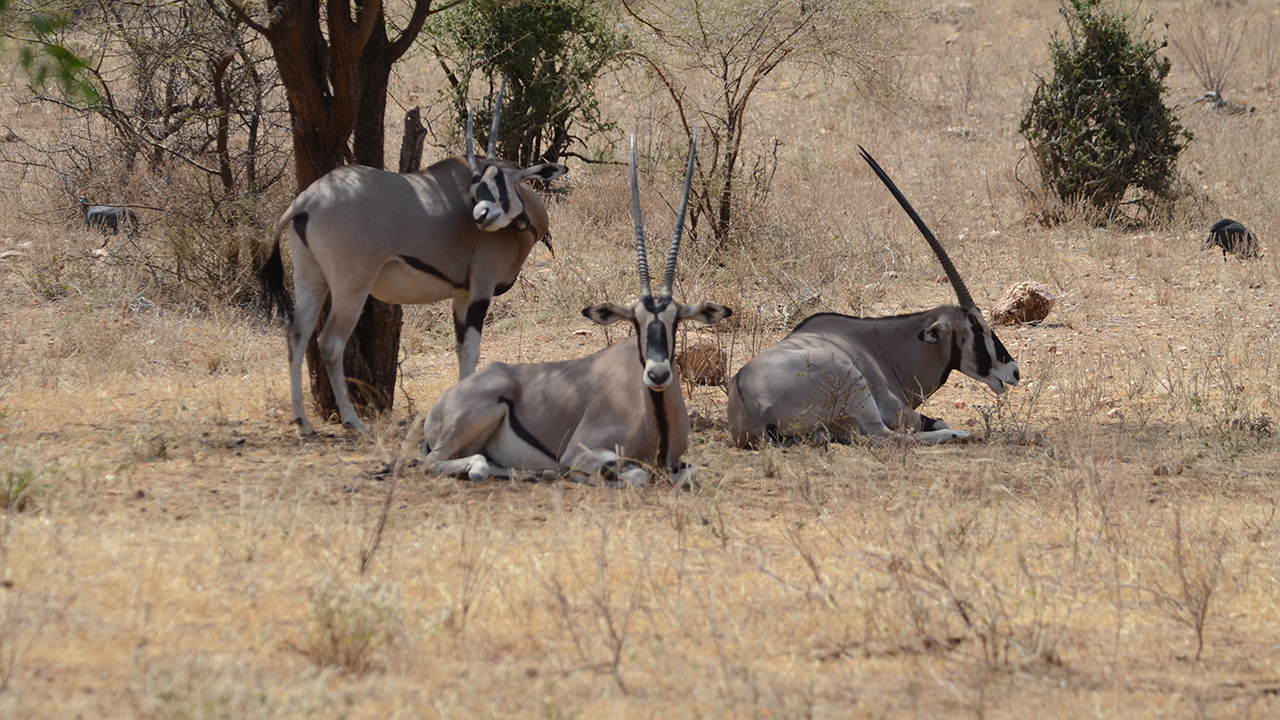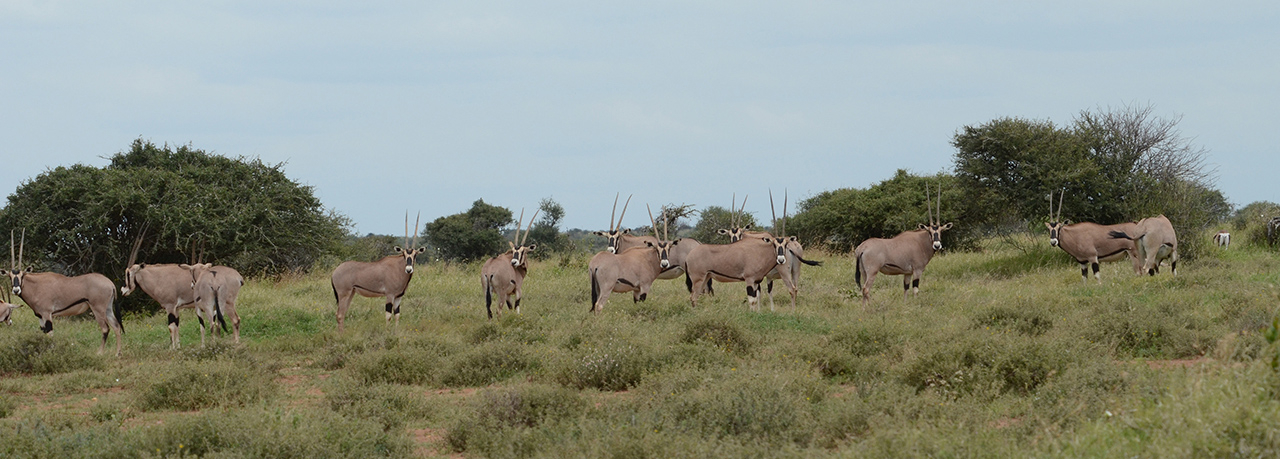Social Structure
Oryxes typically gather in herds ranging from 20 to 60 individuals, though herds as large as 200 can exist. Females spend most of their time with the herd; males occasionally spend time alone, although the majority stays with the mixed herd. Solitary males develop territories that they maintain by marking the boundaries with a unique defecation pattern. When females enter into a single male’s territory, he uses his body and horns to keep them in the center of his area. However, females will also mate with males in the mixed herd.
Communication
Oryxes communicate with one another primarily through displays and gestures, emphasized by this antelope’s distinct coloring. A male conveys dominance with a head nod or an “ear-point” display, where he walks with head and horns held high and slightly turned, and his ears forward. He then twists his horns over to mimic a slow-motion blow in front of his opponent. The subordinate male keeps his head low and horns pressed down, then jumps away when the dominant male delivers his mock blow. Oryxes also use stares and postures to communicate.
Behavior
During a “tournament” display, an oryx begins to circle the herd, gathering speed until it suddenly shifts to a high-stepping stride with neck pulled back and chin up. The oryx then shakes its head from side to side, in precise opposition to its running stride. The display ends when the oryx slows down and charges into the center of the herd, either pretending to slam into another individual or actually clashing horns. If the oryx chooses the latter behavior, it quickly dashes away from the attacked individual to end the conflict. Then it either returns to circling the herd or charges another member. Others in the herd often join the running individual, and oryxes of all ages quickly become bound up in the excitement of the “tournament.”
Conservation
Beisa oryxes have declined dramatically in many areas across their range, due in part to hunting for their meat and hides and to their competition with livestock for food. These antelopes remain common in regions where livestock numbers are low. Only 17 percent of the total oryx population resides in protected areas.

